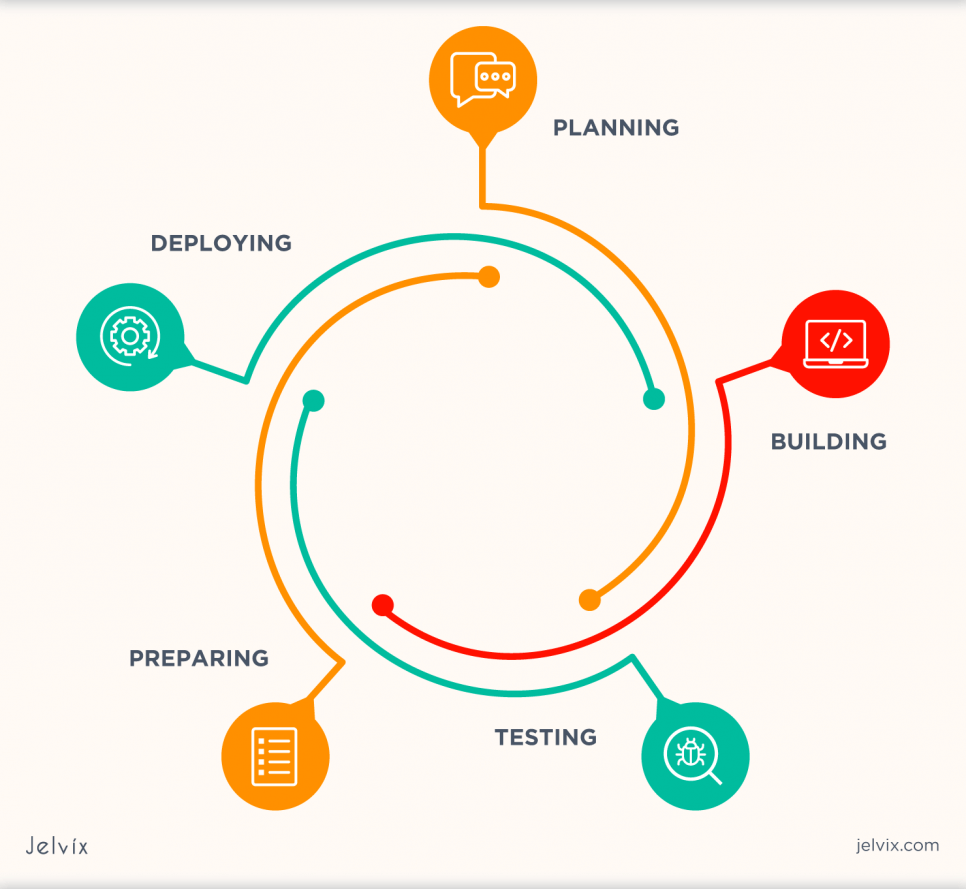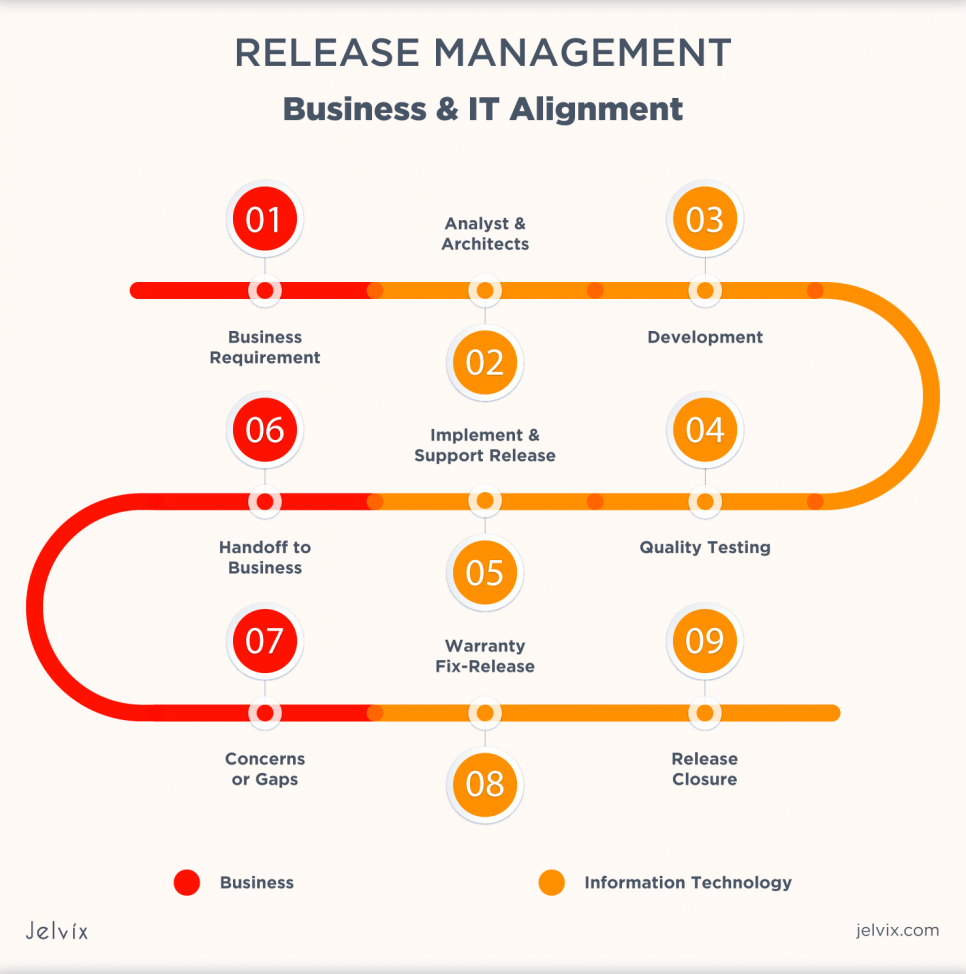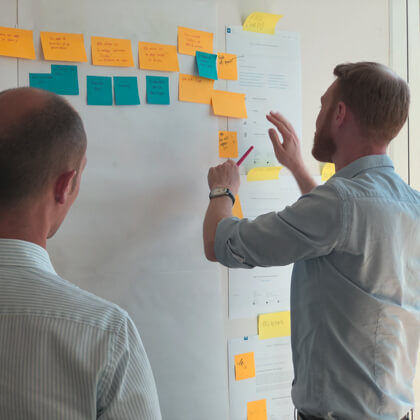Downtime. Bugs. Evil customers. Sounds familiar? If so, you may need to take a closer look at the software release process.
In the ever-changing, constantly developing digital world, you can’t afford half-baked releases. However, 75% of problems result from modifications in the software or its environment. To avoid costly failures and keep your organization running seamlessly, it’s critical to invest in a solid release management process.
In the article, we will detail what software release planning is, why it is so important at every stage of the development, and how to create a good release plan. In addition, you will find valuable information to help you plan your product releases. Finally, you will receive a template for our product management activities.
What is a Release Planning?
According to the definition of the ISO/IEC 20000 standard, a release is a set of one or more new or changed services or service components deployed to production as a result of one or more modifications.
Thus, a release makes services and functions accessible to customers. More often than not, release management is a business rather than a technical responsibility. This is because release planning decisions can be tied to revenue or portfolio management business strategy.
A company may decide to release features based on a consistent marketing plan or delay releases to prevent existing products from being cannibalized or counter competitive activity. Functions can also be released to various users depending on the products offered by the company. For example, premium users can get advanced features.
Why is it Important to Plan a Software Release?
- Setting and clarifying goals. This includes matching product goals to the needs of both business and target audiences.
- High-level scope definition. All team members must have a clear understanding of scale, at least at the highest level.
- Rough estimates. Release planning is the time when the development team evaluates the required workload.
- Sales volume control. When we see the general list of features and when each of them should be released, it is convenient to watch them complete.
- Definition of the constraints of the project triangle. Your plan should take into account the time and budget aspects of the product development process.
Types of Releases
There are three types of software releases in release management: major, minor, and emergency. Understanding these different types of software releases will help you manage how you update and maintain your software better.
- Major Software Releases
These releases include changes to existing features or additions of entirely new features to the software. Most of them fix problems from the previous software version.
- Minor Software Releases
These releases fix minor bugs and make improvements. To provide large-scale point updates, such improvements and issues are typically installed on top of major releases.
- Emergency Fixes
These releases are fixes for bugs and issues in software applications that slow down their performance. End-users experience difficulties while using the software, so problems need to be addressed immediately.
Software Release Processes
Planning, building, testing, preparing, and deploying are the five stages of the release management lifecycle. Each stage is critical for the right organization and implementation of a successful software release.
Stage #1. Planning
The first step is to start software planning with the stakeholders. While there are several ways to complete this step, common initiatives include hosting a kick-off meeting, writing a business case, and building a work breakdown structure to match the project dependencies.
Each of these tasks will help the release manager complete the system development lifecycle. During the planning stage, it’s also important to contact operations teams and management to get approval to build the software and get it ready for development.
Stage #2. Building
The second step of the release process is the most time-consuming, as team members start building the software. At this stage, goals should be assigned to stakeholders, and information about the project should already be clear.
Once the information is transparent, team members can start building the software while testing and improving the features they need. It is recommended that you start monitoring any potential risks or bugs in your production environment to prepare for the testing phase.
Stage #3. Testing
Testing is critical to ensure the product works correctly and is ready to run. It’s important to have team members help identify and fix any bugs that come up, but it’s also critical to start user testing specifically at this stage. Besides, user testing is an opportunity for customers to test your solution, usually in exchange for some sort of reward.
Stage #4. Preparing
During the pre-release phase, your team should complete the required changes and functionality optimizations in the staging environment. This means that each piece of software is working properly and is ready to run.
It is recommended that you run a final quality check, if not multiple times, to make sure all functions work correctly. This can be done by you and your team, although it is important to get help from team members who are not involved as they will be able to see the software with a fresh pair of eyes. Once the software has been finalized and approved, it’s time to start deploying it to a live environment.
Stage #5. Deployment
Deployment is the final step in releasing software. It is the process of bringing the original idea of the software to life, which involves bringing functionality into the real world.
To deploy a software release, additional testing is required to ensure that the functionality remains in production. Once this is finished, it is highly recommended to continually evaluate integrations and make necessary changes to improve functionality. It is also recommended to close the project tasks after running the software and making all necessary changes to the integration.
Release Management Approaches
While your software release should follow the five steps above, regardless of the method you use, there are several different ways you can use to complete your release. These include Agile development and Waterfall development.
Release Management in Agile
First, let’s define what Agile release planning is. Agile methodologies align agile releases with value streams for release deployment. Release units are delivered every 2 weeks of the sprint, and release packages are deployed to production every 10-12 weeks. Scalable Agile Framework (SAFe) is one such Agile methodology designed for large enterprises.
Scrum release planning helps teams manage and deliver complex projects, such as software releases, easier. This is perfect for teams that need to break down tasks into smaller goals. This usually happens with small teams that have big projects.
Release Management in Waterfall
Waterfall methodologies work best in situations where the requirements for a software product can be clearly defined in advance with a high degree of certainty. Release management coordinates with the business side to determine the release needs and coordinates with IT to decide what should be prioritized according to resource availability.
The release manager is answerable for building and executing the software release plan. The release package is tested, accepted by the quality assurance team, and then approved by any other interested parties as determined by the Release Policy. It is then ready to be deployed to a production environment where consumers can access newly released features.
How to Write a Software Release Plan?
The main goal of release planning is to match the next group of minimum market features and set a release date for them. Commonly, it includes the following steps:
Step #1. Determine the Goal
During the first step, the release manager and the team should be able to articulate the overall goal and the way the release aligns with the broader vision and product strategy.
Step #2. Review and Prioritize Tasks
Once you’ve decided on a release goal, the next step is to review the backlog and rank the team’s work items, prioritizing them according to their support for the release purpose.
The result of this step provides the minimum market features for the Agile edition. It’s key to identifying the most important features to achieve the goal, so the less important features should be delayed for future releases.
Step #3. Estimate the Release
To support the planning process, as many of the WIP identified in the previous step as possible should have up-to-date item estimates. It’s time to review all estimates with the team, update them as needed, and create new estimates for any work in progress that has not been estimated yet.
Step #4. Define the Number of Sprints
Based on the total points scored for the release and the speed of the team, it’s possible to calculate the number of sprints needed to accomplish the work.
Since speed is a measure of how many story points a team can complete in a sprint, if a release includes 100 story points and the team speed is 20, we know it will take the team 5 sprints to work through the backlog items.
Step #5. Create a Release Sprint
The release sprint is devoted exclusively to the release of new results. There is no development at this stage, but common tasks in your task log during the release sprint will include performance testing, finalizing user documentation, fixing bugs, and more.
This step is not required for all projects, but if your workflow has certain tasks related to launching software into production, you can create an extra sprint to accomplish these tasks.
Step #6. Determine Release Date
The target date depends on how many sprints are planned for the release.
Stage #7. Keep Plan Up-to-Date
Review the release plan regularly to see how the team is performing against the plan, and look for any changes that may affect which features are implemented or the release date. If there are changes, the plan will need to be upgraded and the release manager may need to contact business owners and others.
What is a Software Release Plan Template?
A release planning template allows team members and stakeholders to visualize product releases in a structured way. Thus, the release manager will most likely use or integrate a release plan template with the team’s sprint planning and project management tools. Agile release planning is commonly used by rapidly changing product groups where the software development process is highly flexible. With each release, you can plan and create new iterations of existing features. A release management plan template helps project managers keep everything in one place.
In the picture below, you can see the basic software release plan example.
This software release schedule template is divided into four sprints of approximately two weeks each, with milestones representing expected release days. According to the lanes, initiatives are classified as belonging to the front-end team, back-end team, and quality assurance team. The columns represent the top initiatives involved in each sprint and are color-coded according to the priority level, making the plan clear and useful to both the product and developer audiences.
How to Select the Best Software Release Planning Template for Team?
When you think of a release plan example, you might think of a flexible tool like PowerPoint where you create tables and text boxes to help your team visualize the release plan. The same goes for creating a release plan in Google Sheets. The flexibility of tools such as PowerPoint and Google Sheets is also a disadvantage of these tools: making updates and bringing other stakeholders to the template is inconvenient.
At the other end of the spectrum, you have a highly regarded release software plan that is built specifically for product managers and software development teams. The disadvantage of this type of software is that it is expensive and can be difficult to set up. Additional in-house development resources may be required to integrate with your existing tools and processes.
Software Release Management Plan: Valuable Tips
Below you will find a list of ideas that you can use while planning your project. All of them are confirmed by numerous successful projects.
- Use the roadmap to plan for multiple releases
The roadmap aims to plan for multiple releases. It covers, among other things, the possibility of poor performance in one iteration and includes a plan to compensate for it in future iterations.
- Prioritize in terms of goals
The needs and goals of the business should be the cornerstone of any commercial business. Set implementation priorities based on business goals.
- Make assumptions, document dependencies, and consider risks
Remember that assumptions are the safest way to propose changes to stakeholders. Dependencies are all the interesting facts related to your product that you were able to find but could not categorize. As far as risks are concerned, we’ve already sketched out what a risk analysis should look like in the release planning process.
- Evaluate carefully
The estimate is often underestimated due to the high risk of error. That’s why you have to pay close attention to the process and do your best.
- Release only ready-made functions
Releasing unfinished features is a way to reduce the overall quality of a project and accumulate technical debt.
- Use analytics
For best results, analyze actual speed, power (maximum possible speed under current conditions), number of bugs, and added new features. The tools we recommend for this are the Burndown/Burndown Chart and the Cumulative Flow Chart.
- Get more people involved
Try to involve stakeholders and team members in the planning process.
- Set up an efficient deployment process
You must have standardized and granular flows for developers and QA engineers, have automation tools for deployment, have a standardized and granular flow for collecting and analyzing data, and have a contingency plan.
- Continuously improve the release process
Even if your current release process looks fine, it could get seriously flawed or buggy at any moment. This is why constant attention to planning is essential.
Concluding Words
Let’s summarize our findings:
- Release planning is not easy, but it’s worth it.
- Planning gives you a better understanding of the goals and allows you to control their achievement.
- As a result, well-planned releases are more likely to succeed, and releases should have fewer bugs.
As you can see, software release planning is quite tricky. This is where a reliable outsourcing company like Jelvix can make your life easier. Feel free to contact us and get a free consultation with our experts, who look forward to answering any of your questions.
We hope the ideas above will help you plan your releases better!

















